Buying puts means you're gaining the right to sell an underlying stock at a specified price, known as the strike price. This strategy lets you profit if the stock's price falls below that level, acting as a safety net against losses in your portfolio. You pay a premium for each contract, which covers 100 shares, and your maximum loss is limited to this premium. As the stock price declines, the value of your put increases, allowing for potential profits. To understand the nuances of this trading strategy, you may want to explore more details.
Key Takeaways
- Buying puts gives the holder the right to sell a stock at a predetermined strike price before the option expires.
- The premium paid for the put option represents the maximum potential loss if the option expires worthless.
- Put options increase in value as the underlying stock price declines, allowing for potential profit.
- They serve as a hedge against falling stock prices, protecting an investor's portfolio from losses.
- Buying puts is generally considered safer than short selling, as the maximum loss is limited to the premium paid.
Put Options Explained Simply
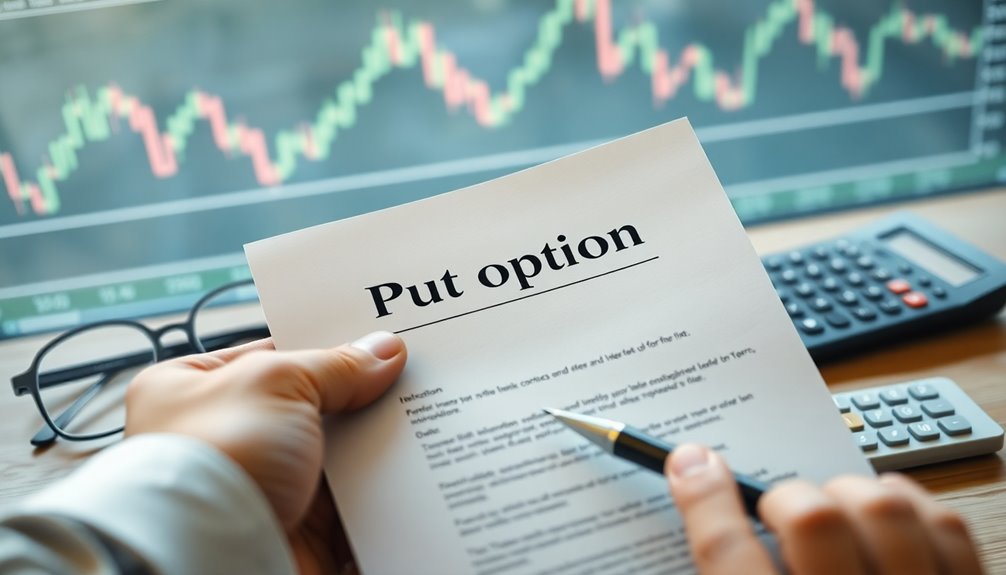
Put options are a powerful tool for investors looking to protect their portfolios or speculate on market declines. When you buy a put option, you gain the right to sell a specific stock at a predetermined strike price before the option expires.
You pay a premium, which is your maximum loss if the underlying stock price stays above the strike price at expiration. If the stock price drops below the strike price, you can either exercise your option to sell at that price or sell the put option for a profit.
This strategy acts as a hedge against potential losses, making it popular among investors wanting to safeguard their investments or profit from market downturns.
Understanding Put Options Basics
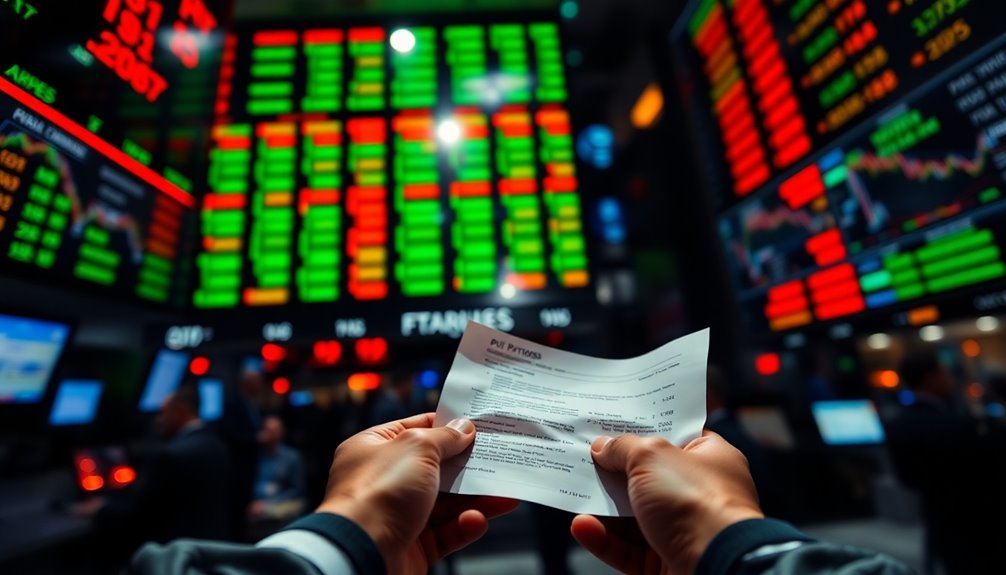
When exploring the world of put options, it's important to grasp the fundamental concepts that underpin this investment strategy.
Buying a put option grants you the right to sell an underlying security at a specified strike price before the expiration date. You pay a premium for this right, typically covering 100 shares per contract.
The value of put options rises as the stock price declines, making them a popular way to hedge against losses in your investments. If the underlying asset's price falls below the strike price, you can exercise the option for profit or sell it for a gain.
Your maximum loss is limited to the premium paid, allowing you to potentially profit from market downturns.
Mechanics of Put Options
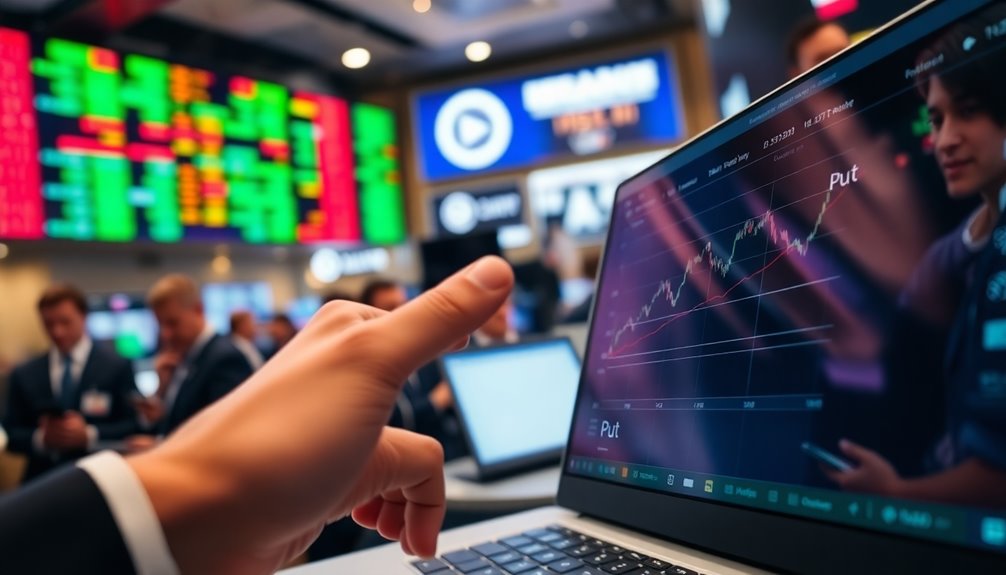
Understanding the mechanics of put options is essential for effectively utilizing them in your investment strategy. Buying a put option grants you the right to sell an underlying asset at a predetermined strike price before the expiration date. You pay a premium for this option, which is your maximum potential loss if it expires worthless.
If the underlying asset's price falls below the strike price, you can either exercise the option or sell it for a profit. The value of put options increases as the asset's price decreases, making them a solid choice for hedging against losses.
However, be mindful of time decay, as the option's value diminishes as the expiration date approaches, impacting your strategies and potential profits from declines.
Pros and Cons Overview

Buying put options presents both advantages and challenges that investors should weigh carefully.
One major advantage is the ability to profit from declining stock prices while providing a hedging mechanism for your portfolio. The maximum loss is limited to the premium paid for the put option, making it a safer bet compared to short selling. Additionally, put options serve as insurance, allowing you to sell shares at a predetermined strike price if the market dips.
However, time decay can erode a put's value as the expiration date approaches, impacting profitability if the stock doesn't fall as expected. Ultimately, successful put buyers need strong market analysis and precise timing to avoid options expiring worthless if the stock price stays above the strike price.
Put Options Versus Call Options
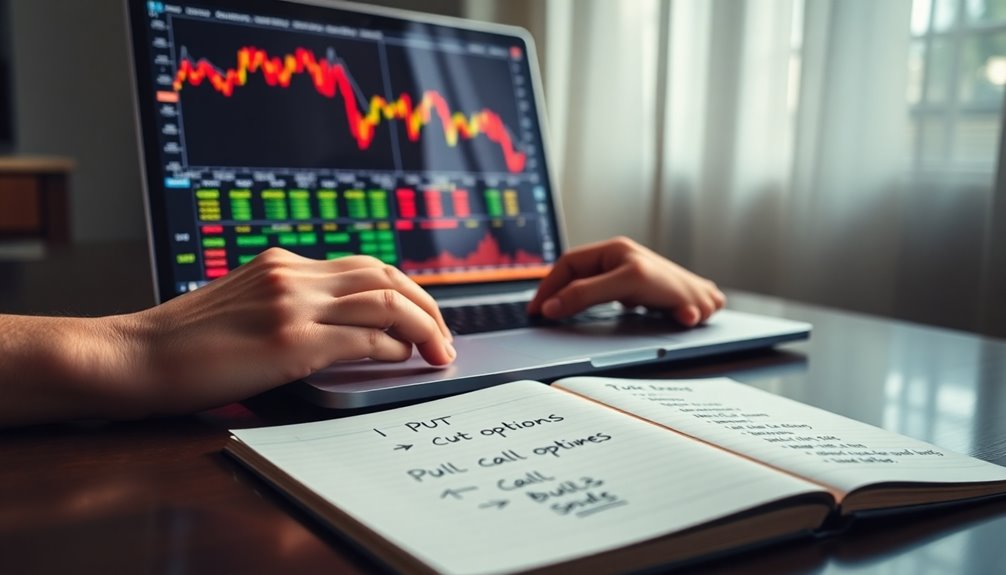
While both put and call options serve as valuable tools in an investor's arsenal, they cater to different market outlooks and strategies.
Put options give you the right to sell an underlying asset at a predetermined price, benefiting from price declines. The value of put options increases as the underlying asset's price drops, making them a reliable bearish strategy.
In contrast, call options grant you the right to buy an underlying asset, increasing in value as prices rise. Both options can hedge against market risks, but puts specifically protect against declines.
Market Volatility Impact
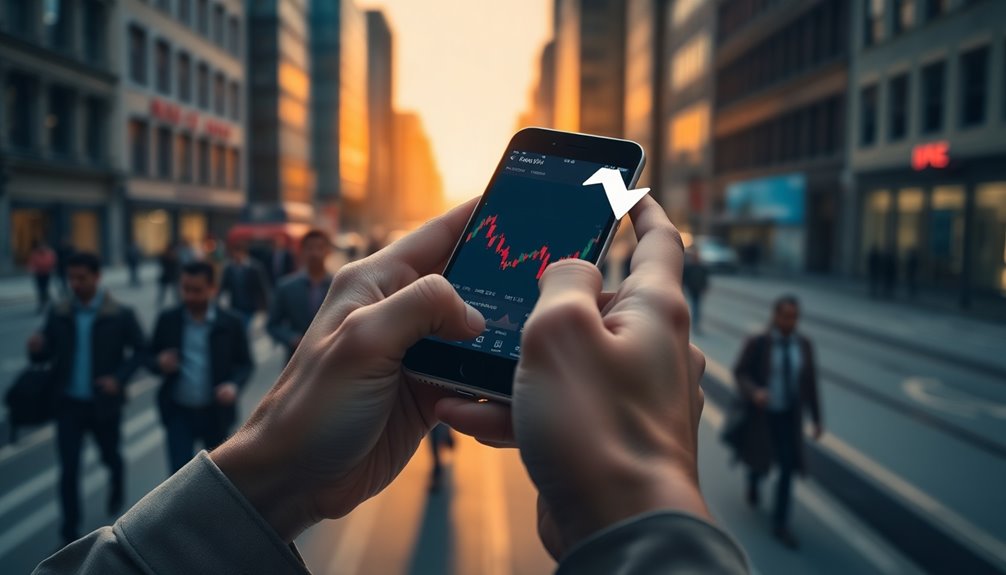
As market volatility rises, the pricing of put options often reflects this uncertainty, leading to higher premiums.
When you see increased demand for put options, it usually signals investors' need to hedge against potential losses in underlying assets, especially during economic downturns.
The CBOE Volatility Index (VIX) often correlates with this trend, indicating bearish sentiment among traders.
Historical data shows that volumes of put options spike when the S&P 500 faces sharp declines, highlighting their role as a protective measure during turbulent times.
Traders frequently leverage put options tactically to capitalize on rapid price movements downwards, further intensifying the demand and pricing of these derivatives in a volatile market environment.
Emerging Market Put Activity

Emerging market put activity serves as a barometer for investor sentiment, particularly concerning potential economic slowdowns or volatility in these regions.
In 2023, you might notice that put option trading in emerging markets jumped by about 25%, reflecting growing concerns over geopolitical risks and inflation pressures. High put-call ratios, often exceeding 1.0, indicate a bearish outlook, with more puts being bought relative to calls.
Many institutional investors use puts as a hedge against potential downturns, especially during uncertain times. As demand for these put options increases, you'll likely see higher premiums due to the perceived risk of significant price declines in underlying assets, highlighting the cautious sentiment prevalent in emerging markets.
Monitor Market Trends Closely

Monitoring market trends closely is essential when you're considering buying put options, since the value of these options tends to rise as the underlying stock price falls.
To maximize profitability, analyze technical indicators like moving averages and support/resistance levels, which can help you predict price movements. Stay updated on earnings reports and economic news, as they can greatly sway stock prices and market trends.
Pay attention to the put-call ratio, a valuable metric for gauging market sentiment and spotting bearish outlooks. Additionally, utilize volatility indexes to assess market uncertainty, empowering you to make more informed decisions when purchasing put options.
Frequently Asked Questions
What Happens When You Buy a Put?
When you buy a put, you gain the right to sell an underlying asset at a set price before a certain date.
If the asset's price drops below that level, you can profit by either exercising the option or selling it for a premium.
However, if the price doesn't fall below the strike price, you'll lose the premium you paid.
It's a strategic move to hedge against potential losses in your investments.
Why Would You Want to Buy a Put Option?
You'd want to buy a put option if you believe a stock's price will drop. This strategy lets you profit from that decline while limiting your losses.
It's like insurance for your investments—if the stock plummets, your put option increases in value. You can also use it to speculate on market trends without the risks that come with short selling.
What Is an Example of Buying a Put Option?
Imagine having a magic ticket that lets you sell stocks at a price you choose, no matter how low they dive! With this incredible ticket, you can protect your investments from market fluctuations and ensure you always have the upper hand. It’s like having a safeguard against losses, allowing you to make strategic moves that traditional investors can only dream of. Meanwhile, in the digital realm, traders are increasingly concerned about security, prompting a surge in bitcoin wallet vulnerability analysis to ensure that their virtual assets remain safe from potential breaches.
For example, if you buy a put option with a $50 strike price for a $5 premium and the stock plummets to $40, you can sell it for $50.
That gives you a profit potential of $500, minus the premium.
It's your safety net in the wild world of investing!
Is Buying a Put Bullish or Bearish?
Buying a put option is considered a bearish strategy. When you buy a put, you're expecting the price of the underlying asset to fall.
This means you believe the market will decline, and you want to profit from that potential drop. By purchasing a put, you gain the right to sell the asset at a predetermined price, allowing you to limit your losses while positioning yourself to benefit from adverse market movements.
Conclusion
In conclusion, buying puts is like having an umbrella on a cloudy day; it gives you protection when conditions turn unfavorable. By understanding the mechanics and risks involved, you can navigate market volatility with confidence. Weigh the pros and cons, and keep an eye on emerging trends to make informed decisions. With the right strategy, put options can be a valuable tool in your investment arsenal, helping you hedge against potential downturns.









